Some refer to the asp (Aspius aspius) as the "poor man's tarpon" but according to Hungarian Vilmos Varga it's a quarry onto itself, worth pursuing with a fly rod and a bunch of large streamers, giving you a lot of fun and something new to catch.
It was a quiet autumn day. My dog and I took a walk down to my favourite river to do some asp-catching.
"They have gathered and started to boil" said my fishing pal on the phone yesterday.
My curiosity was soon bordering on anxiety, and I knew that the following day the first faint beams of sunlight would find me out on the river. The still, motionless mirror of water bore withering orange leaves on its back, with some kingfishers dashing about over the water.
There was true tranquillity but only on the surface...
Silcence broke
Suddenly the silence broke and a thousand tiny fish expoded over the water, followed by a huge glimmering silver body. Then another one and yet another strike!
The time for asps has come!
My fisher's instincts stepped in immediately. I assembled my gear with shaking hands, becoming as excited as ever. The white bucktail streamer was already flying into the foaming water. I answered the second hit with an enormous pull, but I missed – I reacted too late and missed the buddy.
No problem, success will come soon.
After about 20 minutes of casting I got bored of the futile interrogation and decided to change flies. I chose the secret favourite, the Gurgler. The very first cast induced interest. There was a „small asp kid" of about 30 centimeters or 10 inches hanging on the hook, soon followed by some other pals. Yet the more serious fish failed to come. I put back the white streamer.
About the sixth or seventh cast there was a gigantic yank at the rod. This time I got it. It was trying to escape fast and strong but the hook had got stuck well. After landing and taking some photos I took a long last look at the fish admiring it and gently placed it back into the loving arms of the river. It waved good-bye with its tail and swam along in the cool water. I was sure having a great time during those few hours. I hope this was not the last time I took that trip down to the river. Catching asp is a great passtime.
Poor man's tarpon
Asps can be found almost anywhere in Europe except for Denmark, France, Great Britain, Switzerland and a few southern regions. Their average weight is between 1-3 kilos, but examples of 4-5 kilo ones are not rare. Those over 5 kilos are considered colossal. Their spectacular boils are a tell-tale signs of where they are.
In the summer they travel on their own, but in the winter they like to gather in groups: on Lake Balaton one may encounter gangs of no less than 100-120 members. Such teams work in an organised fashion and really efficiently. Asps have no teeth but their strong jaws and huge upper lips enable them to catch small fish easily. They make excellent sporting fish. To quote my friend, Zoltán Pintér: „Asps are the poor man's tarpon"; to me they are the Hungarian substitute for salmon. Either way the point is the same: fly-fishing is not equivalent to trout-fishing. You may and actually must catch any fish that you possible can with a fly-fishing outfit. For those who wish to take the plunge and „chase" this noble fish, let me list a few tricks and tips below (without the claim of plenitude).
Description
Asp ( Aspius aspius L.). Belonging to the family Cyprinidae, it is a predatory
fish. It has a long body, slightly flat on the side. Its mouth is cleaved deeply. Its lower jaw is more protruding than the upper one. It is loaded silvery colour on the sides and white on the belly, while its back is normally greenish or blueish in hue. The huge fins are grey and mainly sort of reddish at the Caudal and Anal fins.
Spawning time begins in early April, and can last till as late as mid-May. It places its eggs upon the fluffy roots of trees touching the water. Fishing time for asp is limited: it is prohibited between March 1st and April 30th. The smallest size legal to catch is 30 centimeters/12 inches and 40 centimeters or 16 inches in closed waters, where you are not allowed to catch more than 3 fish per day.
The most common size 1-2 kilos or 2-4 lbs, but you may find 5-6 kilo or 10-12 lbs specimens as well. The asp can be found in most rivers and bigger lakes of Hungary. It primarily feeds on bleak; continuously cruising in the upper layers of the water, it plunges into the schools of bleaks with great splashes. It will also chop at bigger insects and butterflies flying over or falling on to the surface of the water. It keeps following schools of bleaks everywhere. At Lake Balaton you may even see one chasing bleaks right beside the stones of the lakeshore. On rivers it stays in swivels developing behind dams, spurs, the foot of bridges or other barriers. It also likes to stay in the swift waters over gravel bars. In late autumn one may find them in deeper waters behind where the shallow water meets the river or the lakebeds.
Tackle
The asp living in lakes are more sneaky and spooky than the ones living in rivers. This is because they meet anglers more often and so they get familiar with baits – I would say they find their way about baits easier than an angling shop employee who spends all his free time on the water.
I would recommend a 7 wt., 9-10 foot rod, medium-fast, fast or ultra-fast, a large arbor reel and a relatively long-bellied WF line, both matching the rod.
Not necessarily because of the size of the prospective fish but more because of the size of the flies to be used. I do not wish to recommend specific brands – I will let everyone pick the best suiting their hands and wallets. As for lines, however, you will need to have at least one WF7F and one WF7 Intermediate – the latter to be used in windy weather and in late autumn when asps ramble closer to the bottom – although my friend Levente prefers sink tip or wet tip lines even in summertime.
Shooting heads
For really long casts it is highly practical to employ a shooting head system comprising of a running line of various possible materials, colours, and profiles and a floating, intermediate, slow sinking, medium sinking, fast sinking and an extra-fast sinking head part.
Ways of attaching them to the running part may differ: you may either keep the opportunity for exchanging the heads (quickly adapting to the changing circumstances without a spare spool), or you may build them into the running line. Less noise is one advantage of the latter solution, the other being that the line slides between the guides; however, without the spare spool and the change of the complete line you lose flexibility.
Conditions are naturally driven by the type of water you wish to fish. But 10 years of actively fishing for asps with fly rod have given me enough experience to safely say that a floating line works under all kinds of circumstances as asp tend to stay in the upper layers.
For a tippet I simply tie a fluorcarbon line of approx. 70-90 cm/28-36 inches. You do not need a tapered furled leader, but you definitely should not go below a 0,25 tippet, and even that is no guarantee as the sudden pull you feel when a fish gets hooked may destroy the line if it is wrongly tied or damaged.
Flies
Flies vary by water and angler alike. There is no one „joker". My personal favourite is the streamer. The yellow ones seem to work well in May, while in the summer I use large, white bucktail streamers like clousers with some complementing colors such as brown, grey, black, fluorescent yellow or green (Chartreuse).
They move very well and are easy to tie. (note: Bucktail is made from the butt and tail fibers of the white-tailed deer indigenous in North America)
Streamers made from marabou and synthetic hairs and furs have also proved to be quite catchy. I tie eyes on them (Deep eyes, Dumbbell eyes), which make them go deeper a little and are easy to navigate in rapid, drifting water.
You retrieve the fly with small tugs and pulls, with a sudden drag added every now and then. Poppers are also excellent baits for asp. I only use white ones without legs, which does not mean that different ones are no good. One needs to experiment (have I perhaps grown too lazy?). You can get poppers with soft-foam bodies (Baitfish Popper), but I have to admit that I have just been acquainted with those lately and thus have not had enough experience to report on them. I have in fact tied some 8-10 of them so far, but the stage rehearsal is still to come. A great advantage of these seem to be that they are much longer lasting than their „hard-headed" counterparts, and also a lot louder, which is a definite plus when needed.
Another legendarily efficient bait is the top-water bait called Gurgler – originally designed by Jack Gartside, but found in several different versions since then. One may say it is a secret weapon. Being a loyal type, I tend to employ the white colored one combined with some red, but any other complementing colors mentioned above may result in a "lethal weapon" when combined with the white. I have been successful with orange and lemon colored ones as well. Gurglers are a mixed type: a combination of the popper and the streamer. You move them along the surface with sudden pulls, stopping for a second at times. The strike is unexpected and sometimes frightening; the fish may catch at the rod tip, just as you are about to lift the fly. They make my heart stop, they catch me so unprepared?
Another excellent one – especially at Lake Balaton – is the Seaducer, one of the most famous tarpon flies, somewhat adapted to the size of asp. While other baits normally work well in all kinds of colour combinations, with this one it is almost solely the red-white (RH – "red-head") one that seems to yield results – but a decent one at that!
Wet flies such as Silver March Brown and Palmer Red Tag may work as well; a great many asps have fallen victims for those. One friend, an excellent angler, uses almost exclusively such traditional wet flies on the Danube and does so very successfully. I myself have tried a few times but without any serious result – could it be that something is wrong with my technique? As I have seen them work with my own eyes though, I do believe there is some rationale to them. I used to catch fish with dry flies while fishing for chubs. However, a decent number of catches can only be realized with dry flies during swarming time for the maybug.
Nymphs... I myself never use them, thus I am not able to form an opinion. They may be usable, but I have never known an angler who would use them for catching asp.
So much about asps in a nutshell.
One could actually fill books on fly-fishing for asps, yet I hope that I have been able to serve with some useful information in this short writing of mine.
Vilmos Varga with the help of Zoltan Pinter
- Log in to post comments

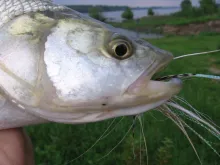
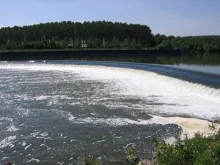
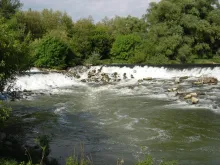
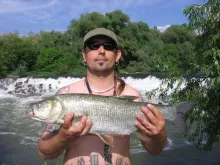
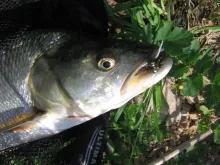
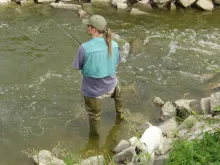

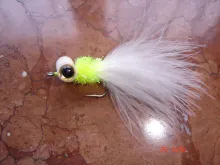
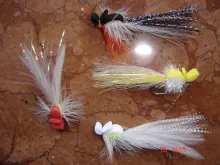
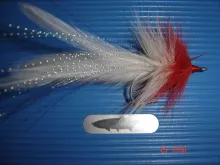
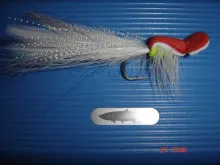
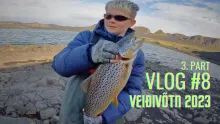

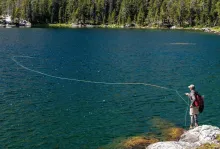


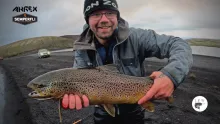

I got 1000s of them
I got 1000s of them on spinning and it's worth-to-try-fish. one of the most difficult to fool. never tried on fly but I will one day. fresh water tarpoon
I just looked up t
I just looked up the bleak to see what it looked like. I would think that one of the bait fish imitations tied with braided mylar tubing, with some sheet foam to deepen the body shape, and maybe a cone head to off-set the bouyancy would be a perfect imitation.
Jo napot vilmos !
Jo napot vilmos !
I would very much like to fish the rapfen. Could You give any hints how to start ? I live only 45 km from the hungarian border.
Thanks a lot
Christoph
Hello Everyone!
T
Hello Everyone!
Thanx for the all people who's the read my write!
Ruan!
Call the my friend (Zoltan Pinter) after spring goin the Asp catching
We have to thank for
We have to thank for your comments!
Ruan,
2/0 (like TMC 811S) sized 'ducers, gurglers, big poppers will do the trick to catch "monsters", especially at Lake Balaton - Central Europe biggest lake. ;)
Zoltan
Asp is really a grea
Asp is really a great fish on fly , has been my favorite target since moving to Hungary , but I find they are very weak fighters, I have not caught any monsters, but a 1.5kg Asp does not give much of a pull even on a 4wt.
has any one else experienced this ?
Tight Lines !
Ruan
If you come to Ameri
If you come to America I'll take you Shad fishing. They are our version of the Asp. Short time window in the Spring, fight hard, exciting to catch. Except for the mouth design, they are similar in construction. Is this the fish that killed Cleopatra?
excelent article, ve
excelent article, very crisp and true. i'm hunting asps on the danube quite a bit too, there're lots of deja vus within the text. :)
thanx for the fun!
This sounds great. T
This sounds great. Thanks for a really interesting article.
You guys are so lucky to have such a fish. In a book of freshwater fishes I found the fish listed as 'Rapfen' (latin name Aspius aspius) it looks like a flyfisher's dream-fish. Hey! and no teeth to bite you with either! I'd like to try pike, but those teeth scare me!
Thanks again.
Regards,
Les
Hello everyone, W
Hello everyone,
We are so lucky to have asps in our rivers too. Like Vilmos Varage writes in his article, it is an wonderful fish to catch.
Strikes are amazing, runs are breathtaking and it is a beautiful fish
Asps are caught here in Belgium and Holland in our rivers de Maas and De Waal and they are also caught in our canals.